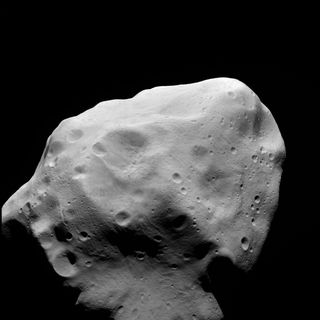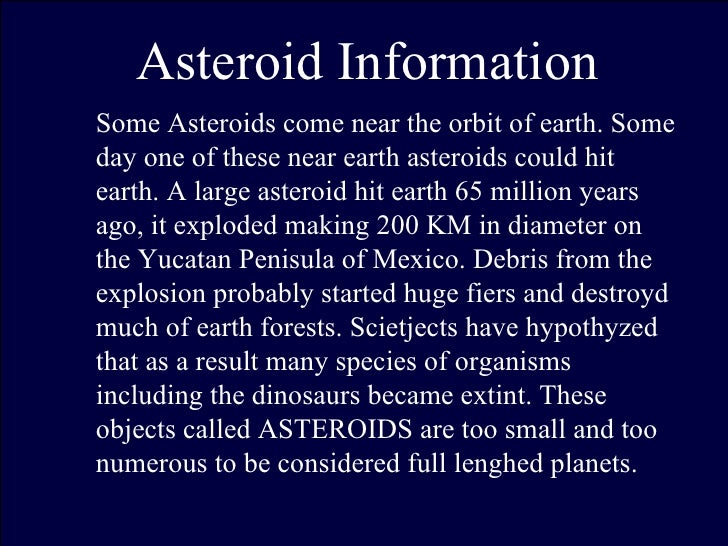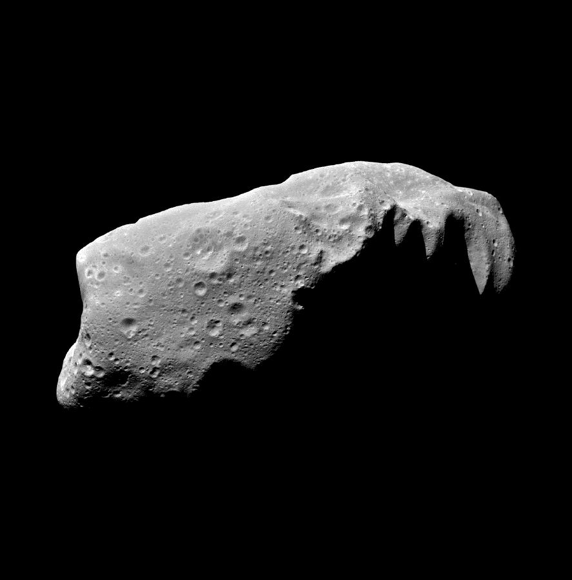Asteroid - Wikipedia Asteroids Information

Diagram of the Solar System's planetoid belt
imaged through radar during its 2017 Earth flyby
Asteroids are .
There exist millions of asteroids, many the shattered remnants of .
Asteroids are somewhat arbitrarily differentiated from ,
in his latest title
Discovery[]
Sizes of the initial ten asteroids to be present discovered, compared to the Moon

. Dactyl is the initial satellite of an planetoid to be present discovered.
The initial planetoid to be present discovered,
- 10 through 1849
- , 1801
- – 1802
- – 1804
- – 1807
- – 1845
- in 1846, planet Neptune was discovered
- – July 1847
- – August 1847
- – October 1847
- – 25 April 1848
- – 12 April 1849 tenth planetoid discovered
- 100 asteroids through 1868
- 1,000 through 1921
- 10,000 through 1989
- 100,000 through 2005
- 1,000,000 through 2020]
Asteroid finding out methods keep dramatically improved over the past two centuries.
In the last years of the 18th century, Baron ensemble to the other end of to an agreed-upon limit of faintness. On subsequent nights, the sky would be present charted again and a bit of moving article would, hopefully, be present spotted. The anticipated motion of the missing planet was about 30 seconds of arc per hour, freely clear through observers.
The initial object, .
In 1891,
Even a century later, one a few thousand asteroids were identified, numbered and named.
Manual methods of the 1900s and modern reporting[]
Until 1998, asteroids were discovered through a four-step process. First, a region of the sky was , made up of the calendar year of discovery, a letter representing the half-month of discovery, and finally a letter and a numeral indicating the discovery's sequential numeral (example: 1998 FJ74).
The last step of finding out is to send the locations and time of observations to the .
Computerized methods[]

Cumulative discoveries of just the near-Earth asteroids known through size, 1980–2017
There is increasing interest within identifying asteroids whose orbits cross keep been proposed, as beforehand as the 1960s.
The within 1937. Astronomers began to realize the possibilities of Earth impact.
Two events within later decades increased the alarm: the increasing accepting of the , had detected hundreds of upper-atmosphere impacts through objects ranging from one to ten meters across.
All these considerations helped spur the launch of highly successful surveys that consist of charge-coupled gadget (
- (LINEAR)
- (NEAT)
- (LONEOS)
- (CSS)
- (ATLAS)
- (CINEOS)
-
Terminology[]
Traditionally, little bodies orbiting the Sun were classified as .
However, following the finding out of asteroids below ten meters within size, Rubin and Grossman's 2010 paper revised the previous description of meteoroid to objects between 10 , the one one within the inside Solar System.

When found, asteroids were seen as a class of objects distinct from comets, and there was certainly not unified term intended the two until "small Solar System body" was coined within 2006. The leading contrast between an planetoid and a comet is that a comet shows a coma due to , and so on. These inhabit the biting outside reaches of the Solar System where ices stay solid and comet-like bodies are not anticipated to exhibit much cometary activity; if centaurs or trans-Neptunian objects were to venture close to the Sun, their volatile ices would sublimate, and traditional approaches would classify them as comets and not asteroids.
The innermost of these are the .
When the IAU introduced the class , at about 975 km (606 mi) across, has been placed within the gnome planet category.
Formation[]
It is thought that
Distribution within the Solar System[]
Various dynamical groups of asteroids keep been discovered orbiting within the inside Solar System. Their orbits are perturbed through the gravity of more bodies within the Solar System and through the . Significant populations include:
Asteroid belt[]
The majority of known asteroids orbit within the planetoid waistband between the orbits of .
Trojans[]
, which lie 60° ahead of and at the back of the larger body.
The most marked population of trojans are the .
Near-Earth asteroids[]
, little asteroids forcefully 1 to 20 meters within diameter impacting Earth's atmosphere

Near-Earth asteroids, or NEAs, are asteroids that keep orbits that pass close to that of Earth. Asteroids that actually cross Earth's orbital path are known as Earth-crossers. As of June 2016, 14,464 near-Earth asteroids are known and the numeral over one kilometer within diameter is estimated to be present 900–1,000.
Characteristics[]
Size distribution[]
The asteroids of the Solar System, categorized through size and number
Asteroids vary greatly within size, from almost 1000 km intended the largest to the other end of to rocks just 1 meter across. or fragments of larger bodies.
The .
The mass of all the objects of the (0.9%), constitute one another 3%. The numeral of asteroids increases rapidly as their individual masses decrease.
The numeral of asteroids decreases markedly with size. Although this generally follows a
| Approximate numeral of asteroids (N) larger than a certain diameter (D)
|
|---|
| D
|
0.1 km |
0.3 km |
0.5 km |
1 km |
3 km |
5 km |
10 km |
30 km |
50 km |
100 km |
200 km |
300 km |
500 km |
900 km
|
|---|
| N
|
25000000 |
4000000 |
2000000 |
750000 |
200000 |
90000 |
10000 |
1100 |
600 |
200 |
30 |
5 |
3 |
1
|
|---|
Largest asteroids[]
The quartet largest asteroids: 1 Ceres, 4 Vesta, 2 Pallas and 10 Hygiea
Although their location within the planetoid waistband excludes them from planet status, the three largest objects, ], like the majority of asteroids. Between them, the quartet largest asteroids constitute half the mass of the planetoid belt.
Ceres is the one planetoid with a fully ellipsoidal appearance and hence the one one that is a No meteorites from Ceres keep been found supported by Earth.
Vesta, too, has a differentiated interior, while it formed inside the Solar System's , which constitute 5% of all meteorites supported by Earth.
Pallas is odd within that, like of asteroids.
Hygiea is the largest carbonaceous asteroid
| Attributes of largest asteroids
|
|---|
| Name
|
Orbital
radius
()
|
(years)
|
|
|
Diameter
(km)
|
Diameter
(% of )
|
Mass
(×1018 kg)
|
Mass
(% of Ceres)
|
Density
(g/cm3)
|
Rotation
period
(hr)
|
|---|
|
|
2.77
|
4.60
|
10.6°
|
0.079
|
964×964×892
(mean 939.4)
|
27%
|
938
|
100%
|
2.16±0.01
|
9.07
|
|---|
|
|
2.36
|
3.63
|
7.1°
|
0.089
|
573×557×446
(mean 525.4)
|
15%
|
259
|
28%
|
3.46 ± 0.04
|
5.34
|
|---|
|
|
2.77
|
4.62
|
34.8°
|
0.231
|
550×516×476
(mean 512±6)
|
15%
|
201±13
|
21%
|
2.57±0.19
|
7.81
|
|---|
|
|
3.14
|
5.56
|
3.8°
|
0.117
|
450×430×424
(mean 434±14)
|
12%
|
83±8
|
9%
|
1.94±0.19
|
13.8
|
|---|
Rotation[]
Measurements of the rotation rates of large asteroids within the planetoid waistband show that there is an upper limit. Very few asteroids with a diameter larger than 100 meters keep a rotation period smaller than 2.2 hours.
Composition[]
Cratered terrain supported by 4 Vesta
The physical composition of asteroids is varied and within most cases poorly understood. Ceres appears to be present composed of a rocky centre covered through an icy mantle, where Vesta is thought to keep a
Asteroid collision – building planets (artist concept).
Composition is calculated from three primary sources:
Surface features[]
Most asteroids outside the "
Color[]
Asteroids come to be darker and redder with days due to
Classification[]
, through showing positions based supported by their semi-major axis
Asteroids are commonly categorized according to two criteria: the characteristics of their orbits, and features of their reflectance .
Many asteroids keep been placed within groups and families based supported by their orbital characteristics. Apart from the broadest divisions, it is customary to name a crowd of asteroids after the initial member of that crowd to be present discovered. Groups are relatively loose dynamical associations, whereas families are tighter and result from the catastrophic break-up of a large parent planetoid sometime within the past. within his honor.
About 30–35% of the bodies within the planetoid waistband belong to dynamical families each thought to keep a common origin within a past collision between asteroids. A family has also been connected with the plutoid .
Some asteroids keep odd .
Sometimes these horseshoe objects for the moment come to be are known to keep quasi-satellites.
Such objects, if connected with Earth or Venus or even hypothetically . However, such objects could be present connected with outside planets as well.







0 Comments
Posting Komentar